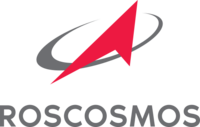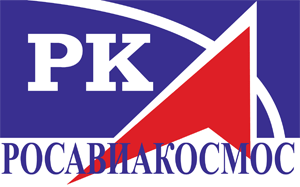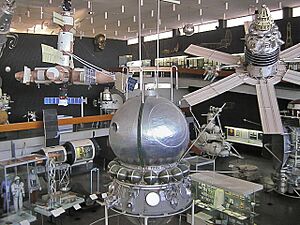Roscosmos facts for kids
| Государственная корпорация по космической деятельности «Роскосмос» | |
 |
|

Headquarters in Moscow, Russia
|
|
| Agency overview | |
|---|---|
| Abbreviation | Roscosmos |
| Formed | 25 February 1992 (as the Russian Space Agency) |
| Preceding agency |
|
| Type | Space agency |
| Jurisdiction | Government of Russia |
| Headquarters | Moscow, Russia 55°47′2″N 37°37′50″E / 55.78389°N 37.63056°E |
| Official language | Russian |
|
General Director
|
Dmitry Bakanov |
| Primary spaceports |
|
| Owner | Russia |
| Employees | 170,500 (2020) |
| Annual budget | |
| Website | roscosmos.ru (archived) |
Roscosmos is Russia's main space agency. It is a special company that handles all of Russia's space activities. This includes sending rockets into space, managing astronaut programs, and doing research about space and airplanes.
Roscosmos started after the Soviet Union ended in 1991. Before that, the Soviet Union had a big space program. Roscosmos began as the Russian Space Agency in 1992. Over the years, it changed its name and structure a few times. In 2015, it became the Roscosmos we know today.
The main office of Roscosmos is in Moscow, Russia. Its mission control center, where they guide spacecraft, is in a nearby city called Korolyov. Astronauts train at the Yuri Gagarin Cosmonaut Training Center in Star City. Roscosmos uses launch sites like Baikonur Cosmodrome in Kazakhstan, which is the world's largest spaceport. They also use Vostochny Cosmodrome in Russia. Roscosmos is a big partner in the International Space Station (ISS).
History of Roscosmos
The original Soviet space program didn't have one main agency in charge. Instead, different design groups made decisions. When Russia formed Roscosmos in 1992, it was a new way of doing things. Yuri Koptev became its first director.
In its early years, Roscosmos faced challenges. Different space companies wanted to keep their own control. Also, there wasn't much money. This led Roscosmos to find new ways to fund its projects. They started launching satellites for other countries and even offered space tourism.
Working with the International Space Station
On October 31, 2000, a Russian Soyuz spacecraft launched from Baikonur. On board were astronauts from NASA and Roscosmos. They arrived at the International Space Station (ISS) on November 2. This was a big moment because it started a continuous human presence on the ISS, which continues to this day.
Improving the Space Program
Around 2005, Russia's economy grew stronger. This meant more money for Roscosmos. The government approved a large budget for space activities. This helped Roscosmos plan new science missions and improve its technology. They worked on projects like new weather satellites and scientific probes.
Challenges and Changes
Even with more money, the Russian space program still had problems. Wages for space workers were low, and some equipment was old. However, many companies started working with foreign partners, which helped. They also began training new engineers.
In 2011, a new director, Vladimir Popovkin, took over Roscosmos. Around this time, some missions faced difficulties, like the Fobos-Grunt Mars mission, which failed.
Reorganizing the Space Industry
Because of some rocket failures, Russia decided to make big changes to its space industry in 2013. They created a new company called the United Rocket and Space Corporation. The idea was to bring many space companies together under one roof. This was to make the industry more efficient and reliable.
In 2016, the old Roscosmos agency was officially replaced by the new state corporation, which kept the name Roscosmos. This was a way to bring the space sector back under government control.
Recent Years
In recent years, Roscosmos has continued its work in space. In 2021, Roscosmos announced plans to leave the ISS program after 2024. Instead, they plan to build their own new space station called the Russian Orbital Service Station, starting in 2025.
Since 2022, Roscosmos has faced new challenges. Some international partnerships have changed due to global events. For example, the European Space Agency (ESA) stopped working with Roscosmos on the ExoMars rover mission. Roscosmos has also seen a decrease in its income from foreign contracts. Despite these challenges, Roscosmos continues to launch rockets and work on its space programs.
Future Plans
Roscosmos plans to move its main office to the new National Space Center in Moscow. This new center will be a hub for Russia's space activities.
Current Programs
Rockets
Roscosmos uses several types of rockets to launch spacecraft. The most famous is the Soyuz rocket, which can carry about 7.5 tons into space. The Proton rocket is even more powerful, able to lift over 20 tons. They also have smaller rockets like Rokot.
Roscosmos is always working on new rockets. They are developing the Angara rocket family and improving the Soyuz rockets.
Operational Rockets
| Vehicle | Manufacturer | Payload mass (kg) | Maiden flight | Total launches | Notes | ||
|---|---|---|---|---|---|---|---|
| LEO | GTO | Other | |||||
| Proton-M | Khrunichev | 23,000 | 6,920 | 3,250 to GSO | 7 April 2001 | 115 | Will be replaced by Angara A5 |
| Soyuz‑2.1a | RTKs Progress | 7,020 | 8 November 2004 | 73 | Can carry humans into space | ||
| Soyuz‑2.1b | RTKs Progress | 8,200 | 2,400 | 27 December 2006 | 76 | ||
| Angara 1.2 | Khrunichev | 3,500 | 2,400 to SSO | 9 July 2014 | 4 | ||
| Angara A5 | Khrunichev | 24,000 | 7,500 with KVTK 5,400 with Briz-M |
23 December 2014 | 4 | ||
Rockets Under Development
| Vehicle | Manufacturer | Payload mass (kg) | Planned maiden flight | Notes | ||
|---|---|---|---|---|---|---|
| LEO | GTO | Other | ||||
| Irtysh (Soyuz‑5) | RTKs Progress | 18,000 crewed 15,500 uncrewed |
5,000 | 2025 | Base for the Yenisei rocket | |
| Amur (Soyuz‑7) | KBKhA | 10,500 reusable 12,500 expendable |
2026 | First reusable Russian rocket using methane fuel | ||
| Yenisei | Energia/RTKs Progress | 103,000 | 26,000 | 27,000 to TLI | 2028 | First super-heavy rocket developed by Russia since the Soviet Union ended |
| Don | Energia/RTKs Progress | 140,000 | 29,500 | 33,000 to TLI | 2032–2035 | An even more powerful version of the Yenisei |
Scientific Programs
Roscosmos runs many programs for studying Earth, communication, and scientific research. These include satellites for space medicine (like the Bion-M series) and weather forecasting (like the Elektro–L and Meteor-M series). They also operate a science satellite called Spektr-RG.
Future plans include robotic missions to the Moon, such as the Luna-Glob series. The Luna 25 mission launched in 2023 but unfortunately crashed on the Moon. They also plan a Venus lander called Venera-D for 2029.
Space Systems
Roscosmos uses Resurs-P satellites to take high-resolution pictures of Earth. These are used for commercial purposes and to replace older satellites.
Gonets is a system of small communication satellites that orbit close to Earth. They help with civilian communication.
Roscosmos is also developing a space system called "Arctic" to help with weather and water monitoring in the Arctic region. They also plan to launch "Obzor-R" and "Obzor-O" satellites for Earth observation.
Gecko Mating Experiment
In 2014, Roscosmos launched the Foton-M4 satellite with five geckos on board. This experiment, called Gecko-F4, aimed to see how weightlessness affected the geckos' ability to reproduce and grow. Sadly, all the geckos died during the mission. Scientists believe a problem with the satellite's heating system might have caused their deaths. Other creatures on board, like fruit flies and mushrooms, survived.
Involvement with the International Space Station
Roscosmos is a key partner in the International Space Station program. They built important parts of the ISS, like the Zarya and Zvezda modules. They also launch astronauts to the ISS using their Soyuz-TMA spacecraft and send supplies with Progress cargo ships.
Roscosmos has also offered space tourism trips to the ISS for people who pay for the experience. Several space tourists have flown to the ISS with Roscosmos.
New Piloted Spacecraft
Roscosmos is working on a new spacecraft for astronauts called Orel. This spacecraft is designed to replace the older Soyuz capsules. The first test flights of Orel are expected to happen in the coming years.
Launch Control
The Russian Space Forces is the military part of Russia's space operations. They work closely with Roscosmos. The Space Forces control the Plesetsk Cosmodrome launch site. Roscosmos and the Space Forces share control of the Baikonur Cosmodrome and the Yuri Gagarin Cosmonaut Training Center. Russia has also built a new spaceport called Vostochny Cosmodrome in the Russian Far East.
Subsidiaries
Roscosmos works with many different companies that help build rockets, satellites, and other space technology. Some of these include:
- United Rocket and Space Corporation
- Energia
- Progress Rocket Space Centre
- Yuri Gagarin Cosmonaut Training Center
- NPO Energomash
- NPO Lavochkin
- Khrunichev State Research and Production Space Center
- Russian Space Systems
- Chemical Automatics Design Bureau
- TsNIIMash (Central Research Institute of Machine Building)
See also
 In Spanish: Roscosmos para niños
In Spanish: Roscosmos para niños
- American space program
- Russian space industry
- List of government space agencies





